Online stores today are incessantly trying to keep up with the changing demands of their customers. This explains why E-commerce development has been constantly transforming. The more complex online shopping becomes, the less likely it is that traditional platforms provide modern, flexible experiences. That’s where headless commerce platforms become essential.
E-commerce businesses are always looking for innovative solutions to deliver seamless and interactive, shopping experiences. Headless commerce platforms are helping them keep up with these dynamic customer needs and stand out in the market. But what is a headless commerce platform, and why have they become so popular lately? Read below to find out
What Is a Headless Commerce Platform?
Headless commerce decouples the frontend presentation layer from the backend. This is what the customers access like inventory management, payment processing, and order fulfillment functionalities. Headless commerce platforms are distinct from monolithic eCommerce solutions. They let businesses deliver custom, flexible user experiences and still keep their operations capabilities on the back end.
They connect the front end and the back end using APIs to help developers reach any kind of digital touch point. This could be in the form of a website, mobile application, voice assistant, or through an IoT device.
The Headless Architecture
Headless architecture represents a modern shift in website development, decoupling the frontend presentation layer from the backend content management system (CMS). This separation offers several key advantages. Like, it unlocks unparalleled design flexibility. This allows developers to create unique and engaging user experiences across various platforms (web, mobile, IoT).
Headless e-commerce platforms are scalable and adaptable. This enables seamless integration with other systems and a more agile development process. Finally, the enhanced security resulting from this separation of concerns minimizes the risk of vulnerabilities impacting both frontend and backend operations.
What is a Traditional – Monolithic Platform?
Traditional platforms are monolithic systems where the front end and back end are intertwined. This coupling limits flexibility, making it challenging to adapt to evolving design trends or integrate with other systems.
For example, modifying the website’s design often requires changes to the underlying content management system, hindering agility and potentially increasing development time and costs. While suitable for basic websites, traditional platforms may not be ideal for organizations seeking greater design freedom, scalability, and integration capabilities.
Traditional Architecture
In contrast, traditional website architectures maintain a tightly coupled relationship between the front end and back end. These systems, often powered by platforms like WordPress or Drupal, manage both content and presentation within a single platform. While this approach offers simplicity for basic websites and benefits from a large community and extensive support, it also presents limitations. Design flexibility can be constrained, scaling and integration with other systems can be challenging, and security vulnerabilities can impact the entire system.
Headless vs. Traditional Architecture: A Comparison
Headless architecture may require a steeper initial learning curve and higher development costs. Its long-term benefits include increased flexibility, scalability, and security. These make the top headless platforms a compelling choice for many organizations. Particularly those with complex digital needs and a focus on innovative user experiences.
| Feature | Headless Architecture | Traditional Architecture |
|---|---|---|
| Architecture | Decoupled (Frontend and Backend separate) | Coupled (Frontend and Backend integrated) |
| Flexibility | High | Limited |
| Scalability | High | Moderate |
| Integration | Seamless | Can be challenging |
| Security | Enhanced | More susceptible to vulnerabilities |
| Development | More complex initially | Generally simpler to set up |
| Technology | Frontend freedom (React, Vue, Angular, etc.) | Often limited to CMS-specific options |
| Content Delivery | API-driven | Primarily through the CMS |
Top Headless Commerce Platforms 2025
The headless commerce platform market is expanding exponentially. More platforms keep coming up that help businesses meet the customized needs of modern-day businesses. As a result, the choice of the best headless platform would affect how you scale or innovate in the competitive market. Here are some of the top headless platforms in 2025 and what makes them stand out.
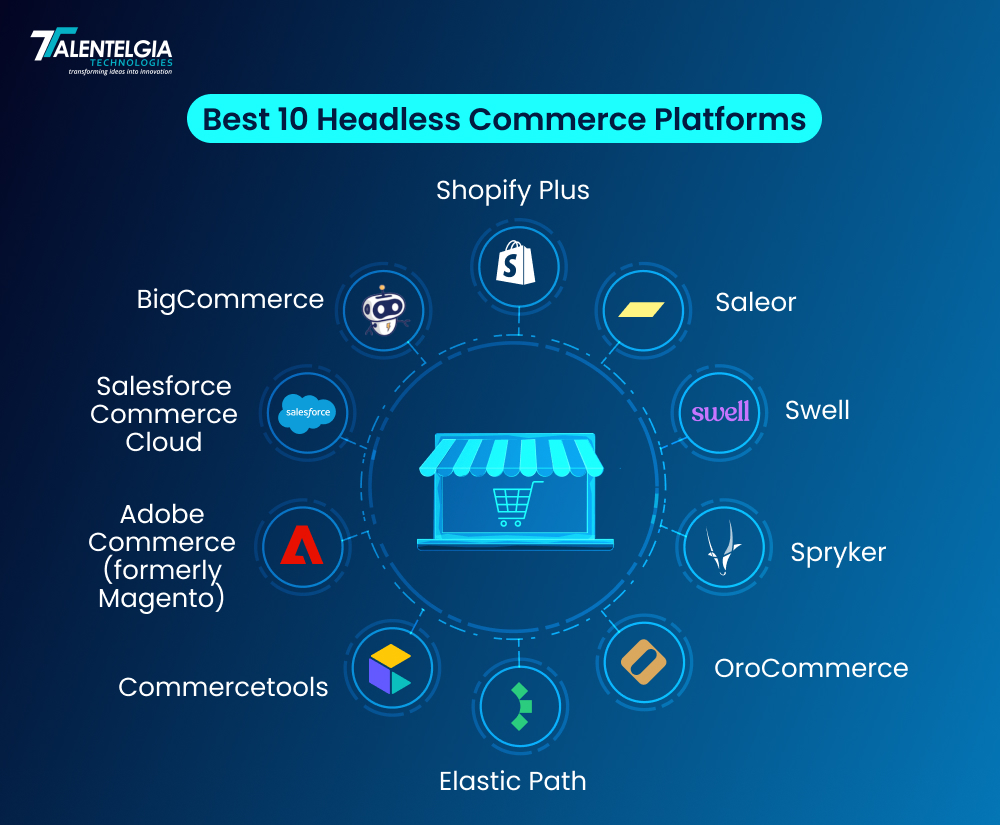
Shopify Plus
Shopify Plus is the best e-commerce solution for enterprises seeking ease of use with advanced functionality required to handle complex business volumes. A strong foundation, an effective online store capable of scalability and performing well, achievable. This platform, through its e-commerce headless technology capabilities, can be integrated into custom storefronts developed with technologies like React, Vue.js, and Angular.
This leads to fluidity in design and makes it good for a wide variety of different customer experiences. Shopify Plus has a very large app ecosystem. This provides third-party integrations for marketing and customer support.
Key Features: Strong API, extensive app ecosystem, user-friendly interface, multi-channel support, 24/7 support, advanced reporting and analytics, fraud prevention, built-in POS system.
Saleor
Saleor is an open-source headless platform. This GraphQL-first platform gives complete control over the business’s eCommerce stack. It supports flexible and scalable architecture to help the developers build storefronts customarily and integrate various third-party services.
It focuses on developer experience, and modern technologies, and is popular with tech-savvy businesses. This makes it a platform that is based on their technical expertise and helps them make a solid e-commerce solution.
Key Features: The open-source platform, GraphQL-first approach, developer-friendly interface, flexible architecture, strong API, headless capabilities, integrations with modern technologies, strong community, and support.
Swell
Swell is a modern, JavaScript-first platform that puts the developer’s experience and flexibility at the forefront. It is highly performant and scalable, allowing developers to create custom storefronts with ease.
Its clean API and modern architecture make it popular among developers and agencies looking for a platform for modern development practices. Swell enables flexible and scalable solutions for businesses that intend to build distinctive and innovative headless commerce platform experiences.
Key Features: It is JavaScript-first, has a developer-friendly interface, has a flexible architecture, and is performance-oriented. It has a robust API, and headless technology capabilities, and has integrations with the latest technologies available.
Spryker
Spryker is a very adaptive and scalable platform designed to meet rigorous business needs. With its microservices architecture, modular, customizable, and adaptive e-commerce solutions that meet the changing user needs.
Spryker is suited for big businesses with complicated business processes like B2B companies having various customer groups and complex order fulfillment processes. The focus on modularity and flexibility allows adding new features and integrations based on the business requirements.
Key Features: Microservices architecture, highly scalable, modular, supports complex business logic, B2B support, omnichannel, robust API, customization options.
OroCommerce
OroCommerce is an open-source B2B eCommerce solution. It enables the full extent of features provided by order management, customer relationship management (CRM), and PIM specifically adjusted to B2B business specifics.
OroCommerce’s headless commerce capabilities allow businesses to create customized B2B experiences across websites, mobile apps, and marketplaces. This adds more control to customization and integration with systems to a huge extent.
Key Features: B2B-specific features, open-source platform, CRM and PIM integrations, flexible and customizable, supports omnichannel. It also has great community support and solid integrations.
Elastic Path
It is one of the best headless commerce platforms that relies on the API-first principle and supports omnichannel experiences. Through this, the business can easily deliver consistent brand experiences across every touchpoint. This extends to websites, mobile apps, social media, voice assistants, or in-store experiences.
Elastic Path’s headless architecture gives the business more freedom to uncouple the front end from the back end. It adds more flexibility and agility in producing unique and compelling customer experiences. Its strong focus on omnichannel experiences offers a seamless customer journey across all the platforms.
Key Features: API-first approach, omnichannel support, personalization capabilities, strong focus on customer experience, robust integrations, high scalability, and flexible pricing models.
Contentful + Commerce Layer
This is the ultimate combination of a headless CMS from Contentful that forms a strong eCommerce layer. Contentful provides flexibility as well as scalability in managing all your products, marketing content, and the customer experience altogether. Similarly, the Commerce Layer does the core functionality of eCommerce for order management, inventory management, and payment handling.
This is the best approach for content-driven brands focusing on rich and engaging customer experiences. These two give businesses a powerful and flexible solution when looking for a content-first approach to eCommerce.
Key Features: Content-first approach, flexible content modeling, robust eCommerce functionalities, seamless integration, omnichannel support, API-first approach, and strong focus on content management.
Adobe Commerce, formerly Magento
Adobe Commerce, formerly known as Magento. It is a hybrid of both traditional and headless commerce and offers a strong platform with a robust community. Its wide extensions also enable businesses to use headless commerce platform capabilities for greater flexibility in front-end development.
This approach allows companies to become scalable. They get access to the features of a traditional platform with the agility and innovation potential of headless architecture. Adobe Commerce is one of the top headless platforms for businesses with in-house development teams that require high customization and control.
Key Features: Hybrid approach, robust community and support, vast feature set, advanced marketing and merchandising tools. Omnichannel support, B2B and B2C capabilities, robust integrations, AI-powered features.
Salesforce Commerce Cloud
It is a cloud-based platform that integrates with other products in Salesforce, like CRM and marketing automation. This gives an all-inclusive view of the customer’s data that helps businesses deliver personalized shopping experiences.
Salesforce Commerce Cloud is highly featured, which includes AI-driven personalization, omnichannel support, and a strong customer data platform.
It delivers headless commerce platform capabilities and provides consistency of brand experience at all touchpoints. This could be through a website, mobile app, social media, and voice assistant.
Key Features: Integration into the Salesforce ecosystem, AI-powered personalization, Omnichannel support, Customer data platform that’s strong, Robust analytics, B2B and B2C, Advanced marketing automation.
BigCommerce
It is one of the leading cloud-based eCommerce platforms in terms of scalability and performance. This headless CMS platform is created with an API-first approach. This empowers businesses to integrate easily with different front-end technologies and third-party services.
This flexibility allows for the creation of unique and interesting online stores, which can meet specific business needs. BigCommerce is also very suitable for handling large transaction volumes; making it perfect for fast-growing businesses.
Its feature-rich set includes multi-channel support and a security focus. These make it great for the success of online businesses.
Features: strong API, high performance, powerful security, self-contained SEO tools, multichannel capabilities, advanced analytics capabilities, B2B/B2C capabilities, and strong integrations.
Commercetools
One of the pioneers in the headless commerce platform market, it uses the microservice-based architecture for flexibility and scalability. This enables businesses to offer extremely customized and customer-centric shopping experiences. These work for all channels—websites mobile applications, or social media, and voice assistants.
Commercetools is agile and responsive. It can be flexible enough to respond to changing market demands and the expectations of customers. The API-first principles allow developers to work on unique, creative eCommerce solutions with more control and flexibility.
Key Features: Microservices architecture, API-first approach, highly scalable, personalized experience, robust integrations, omnichannel capabilities, analytics, and much more flexible pricing models.
Best Headless E-commerce Platforms
| Platform | Best For | Pricing |
|---|---|---|
| Shopify Plus | High-volume businesses, enterprises | Subscription-based, tiered pricing |
| Saleor | Tech-savvy businesses, developers | Open-source (self-hosted), cloud options available |
| Swell | Developer-centric businesses, modern storefronts | Subscription-based |
| Spryker | Large enterprises with complex needs, B2B businesses | Custom pricing, enterprise-focused |
| OroCommerce | B2B businesses, enterprises | Open-source (self-hosted), cloud options available |
| Elastic Path | Omnichannel businesses, customer experience-focused | Subscription-based |
| Contentful + Commerce Layer | Content-driven businesses, headless commerce | Combined pricing of both platforms |
| Adobe Commerce | Businesses with in-house development teams, high customization needs | License-based, cloud options available |
| Salesforce Commerce Cloud | Businesses within the Salesforce ecosystem | Subscription-based |
| BigCommerce | High-growth businesses, large transaction volumes | Subscription-based, tiered pricing |
| Commercetools | Enterprises, complex omnichannel needs, API-first development | Subscription-based, usage-based pricing |
Also Read: How To Start An E-Commerce Business
Benefits of Headless Commerce Platforms
The best e-commerce headless commerce platforms are powerful tools in e-commerce. Thanks to their approach to eCommerce, they get rid of the restrictions that traditional solutions impose on businesses. Businesses can innovate and give the best experience for customers with the front end separated from the back end. This freedom is changing how brands interact with customers and what demands the market gives.
- Flexibility and Customization: Create a unique user experience based on your brand, with no pre-built templates to work within.
- Time to Market: Update or deploy new front-end experiences without the back-end affecting it.
- Scalability: Scale eCommerce operations as needed without having to overhaul the system.
- Improved Performance: Optimize front-end performance independently, thereby reducing loading time and improving the user experience.
- Headless commerce is the fastest-growing trend in e-commerce. It’s expected to grow to a 20.5% compound annual growth rate and reach $32.1 billion by 2027.
- By 2025, e-commerce will account for 24.5 percent of global retail sales and comprise all, including B2B and B2C retailing.
- Fast adaptability is a key differentiation in itself: Only 5% of organizations can adapt in minutes, while 63% have to wait days or more. Headless platforms give organizations this flexibility.
How to Choose the Right Headless Commerce Platform?
Choosing a headless commerce platform determines its performance and growth. With the many options available, each platform has to be weighed according to your needs. Some of them include scalability, integration capabilities, and technical expertise. Here are some considerations that you can look into for your convenience when choosing one of the best headless commerce platforms:
- Business Size and Needs: It should meet the size, needs, and resources of your business.
- Technical Expertise: A headless commerce platform is quite technical to develop and maintain, requiring considerable expertise for both development and maintenance.
- Budget: Be ready for one-time as well as ongoing expenses on hosting, integrations, and developer support.
- Integration: It must integrate very easily with all existing tools, including CRM, ERP, and marketing software.
- Scalability: Choose a platform that grows with your business and can scale for future requirements.
Use Cases of Headless Commerce Platforms?
Headless commerce is a powerful approach to e-commerce in mobile app development. It allows businesses to deliver consistent brand experiences across various touchpoints. These examples of the top headless platforms include websites, mobile apps, social media channels, and voice assistants.
- Custom experience: Create engaging online stores with unique designs and personalized experiences tailored to each customer’s preferences.
- Immersive shopping experiences: Augmented reality (AR) and virtual reality (VR) offer shopping experiences where customers interact with products in exciting ways.
- The voice commerce platforms: Seamless voice-assisted buying experience through platforms that include Amazon Alexa and Google Assistant.
- Progressive Web Apps: Offer fast, reliable, engaging mobile shopping experiences with apps that work offline with an app-like native feel.
- DTC Marketplaces: Real branding and design; sell to the customer over the heads of traditional retailers.
- IoT Integrations: Ability to shop smoothly and products. This will make it easy to reorder something if reordered or find what else to purchase.
Getting Started with a Headless CMS Platform
Headless CMS platforms form a very strong foundation in the building of modern, flexible, and scalable digital experiences. But a headless journey takes much planning and execution. Below are the basic steps to get it right when working with a CMS development services provider.
Headless CMS platforms form a very strong foundation in the building of modern, flexible, and scalable digital experiences. But a headless journey takes much planning and execution. Below are the basic steps to get it right when working with a CMS development services provider.
- Evaluate Your Needs: Determine what content and platforms you will actually be managing, and the required level of customizations.
- Find the right headless CMS to use: Find a suitable platform that matches your budget, and technical aptitude and supports your needs. Consider features and scalability, then pricing and a community. Popularity-wise Contentful, Strapi, or Sanity are probably good options for you.
- Content Model Plan: The content model refers to the way your content structure and relationships are defined. You should use a well-defined content model. This will make sure that your content will be well-organized, searchable, and accessible for delivery across various channels.
- Integrate it with the front end: Use APIs to connect your selected headless CMS with your front end. This lets you deliver your content smoothly onto your website, mobile app, and other digital touchpoints.
- Train your team: Ensure your team is well-equipped with the information and resources to deploy a headless CMS platform efficiently.
- Take it small: Try starting with a small pilot project to test deployment and establish potential issues that may arise. This will allow you to improve your processes and you will have gained valuable experience before the full-scale rollout process.
- Monitor and iterate: Continuously monitor your headless CMS implementation. Collect feedback, and make the necessary adjustments for optimizing performance, improving workflows, and ensuring that everything keeps moving forward.
Why Should You Choose Headless Commerce Platforms?
The eCommerce industry is changing. The drivers behind this are shifts in consumer behavior and acceleration in technology advances. Consumers want easy, personalized, and engaging experiences across different channels. Traditional eCommerce systems cannot cope with these dynamic demands. This opens an opportunity for innovative solutions like headless commerce platforms. It makes it possible for businesses to innovate and scale as never before with the decoupling of front-end and back-end.
This gives agility toward adapting to the changes in markets and preferences of customers. Headless commerce platforms are changing the future of e-commerce by making businesses one step ahead in the game with:
- Personalized customer experiences, and crafted tailored shopping journeys across channels.
- Agility and Innovation: Rapid adoption of market trends and emerging technologies.
- Global Reach: Support multilingual, multicurrency, and region-specific requirements.
Conclusion
Headless commerce will be the go-to choice for startups and established businesses alike. So the choice of a headless commerce platform can make or break long-term success.
A good headless commerce platform will allow you to personalize the shopping experience for customers. It lets you reach them across any device, and scale up without worrying about outgrowing your platform. The more seamless, engaging experiences that customers expect you to deliver, the sooner you can meet their needs.
Therefore, headless eCommerce is the future. It brings numerous advantages for those companies who invest in it. So, don't wait! Give your business that flexibility that contributes to its growth in this fast-changing landscape of eCommerce.


 Healthcare App Development Services
Healthcare App Development Services
 Real Estate Web Development Services
Real Estate Web Development Services
 E-Commerce App Development Services
E-Commerce App Development Services E-Commerce Web Development Services
E-Commerce Web Development Services Blockchain E-commerce Development Company
Blockchain E-commerce Development Company
 Fintech App Development Services
Fintech App Development Services Fintech Web Development
Fintech Web Development Blockchain Fintech Development Company
Blockchain Fintech Development Company
 E-Learning App Development Services
E-Learning App Development Services
 Restaurant App Development Company
Restaurant App Development Company
 Mobile Game Development Company
Mobile Game Development Company
 Travel App Development Company
Travel App Development Company
 Automotive Web Design
Automotive Web Design
 AI Traffic Management System
AI Traffic Management System
 AI Inventory Management Software
AI Inventory Management Software
 AI Software Development
AI Software Development  AI Development Company
AI Development Company  AI App Development Services
AI App Development Services  ChatGPT integration services
ChatGPT integration services  AI Integration Services
AI Integration Services  Generative AI Development Services
Generative AI Development Services  Natural Language Processing Company
Natural Language Processing Company Machine Learning Development
Machine Learning Development  Machine learning consulting services
Machine learning consulting services  Blockchain Development
Blockchain Development  Blockchain Software Development
Blockchain Software Development  Smart Contract Development Company
Smart Contract Development Company  NFT Marketplace Development Services
NFT Marketplace Development Services  Asset Tokenization Company
Asset Tokenization Company DeFi Wallet Development Company
DeFi Wallet Development Company Mobile App Development
Mobile App Development  IOS App Development
IOS App Development  Android App Development
Android App Development  Cross-Platform App Development
Cross-Platform App Development  Augmented Reality (AR) App Development
Augmented Reality (AR) App Development  Virtual Reality (VR) App Development
Virtual Reality (VR) App Development  Web App Development
Web App Development  SaaS App Development
SaaS App Development Flutter
Flutter  React Native
React Native  Swift (IOS)
Swift (IOS)  Kotlin (Android)
Kotlin (Android)  Mean Stack Development
Mean Stack Development  AngularJS Development
AngularJS Development  MongoDB Development
MongoDB Development  Nodejs Development
Nodejs Development  Database Development
Database Development Ruby on Rails Development
Ruby on Rails Development Expressjs Development
Expressjs Development  Full Stack Development
Full Stack Development  Web Development Services
Web Development Services  Laravel Development
Laravel Development  LAMP Development
LAMP Development  Custom PHP Development
Custom PHP Development  .Net Development
.Net Development  User Experience Design Services
User Experience Design Services  User Interface Design Services
User Interface Design Services  Automated Testing
Automated Testing  Manual Testing
Manual Testing  Digital Marketing Services
Digital Marketing Services 
 Ride-Sharing And Taxi Services
Ride-Sharing And Taxi Services Food Delivery Services
Food Delivery Services Grocery Delivery Services
Grocery Delivery Services Transportation And Logistics
Transportation And Logistics Car Wash App
Car Wash App Home Services App
Home Services App ERP Development Services
ERP Development Services CMS Development Services
CMS Development Services LMS Development
LMS Development CRM Development
CRM Development DevOps Development Services
DevOps Development Services AI Business Solutions
AI Business Solutions AI Cloud Solutions
AI Cloud Solutions AI Chatbot Development
AI Chatbot Development API Development
API Development Blockchain Product Development
Blockchain Product Development Cryptocurrency Wallet Development
Cryptocurrency Wallet Development About Talentelgia
About Talentelgia  Our Team
Our Team  Our Culture
Our Culture 
 Healthcare App Development Services
Healthcare App Development Services Real Estate Web Development Services
Real Estate Web Development Services E-Commerce App Development Services
E-Commerce App Development Services E-Commerce Web Development Services
E-Commerce Web Development Services Blockchain E-commerce
Development Company
Blockchain E-commerce
Development Company Fintech App Development Services
Fintech App Development Services Finance Web Development
Finance Web Development Blockchain Fintech
Development Company
Blockchain Fintech
Development Company E-Learning App Development Services
E-Learning App Development Services Restaurant App Development Company
Restaurant App Development Company Mobile Game Development Company
Mobile Game Development Company Travel App Development Company
Travel App Development Company Automotive Web Design
Automotive Web Design AI Traffic Management System
AI Traffic Management System AI Inventory Management Software
AI Inventory Management Software AI Software Development
AI Software Development AI Development Company
AI Development Company ChatGPT integration services
ChatGPT integration services AI Integration Services
AI Integration Services Machine Learning Development
Machine Learning Development Machine learning consulting services
Machine learning consulting services Blockchain Development
Blockchain Development Blockchain Software Development
Blockchain Software Development Smart contract development company
Smart contract development company NFT marketplace development services
NFT marketplace development services IOS App Development
IOS App Development Android App Development
Android App Development Cross-Platform App Development
Cross-Platform App Development Augmented Reality (AR) App
Development
Augmented Reality (AR) App
Development Virtual Reality (VR) App Development
Virtual Reality (VR) App Development Web App Development
Web App Development Flutter
Flutter React
Native
React
Native Swift
(IOS)
Swift
(IOS) Kotlin (Android)
Kotlin (Android) MEAN Stack Development
MEAN Stack Development AngularJS Development
AngularJS Development MongoDB Development
MongoDB Development Nodejs Development
Nodejs Development Database development services
Database development services Ruby on Rails Development services
Ruby on Rails Development services Expressjs Development
Expressjs Development Full Stack Development
Full Stack Development Web Development Services
Web Development Services Laravel Development
Laravel Development LAMP
Development
LAMP
Development Custom PHP Development
Custom PHP Development User Experience Design Services
User Experience Design Services User Interface Design Services
User Interface Design Services Automated Testing
Automated Testing Manual
Testing
Manual
Testing About Talentelgia
About Talentelgia Our Team
Our Team Our Culture
Our Culture
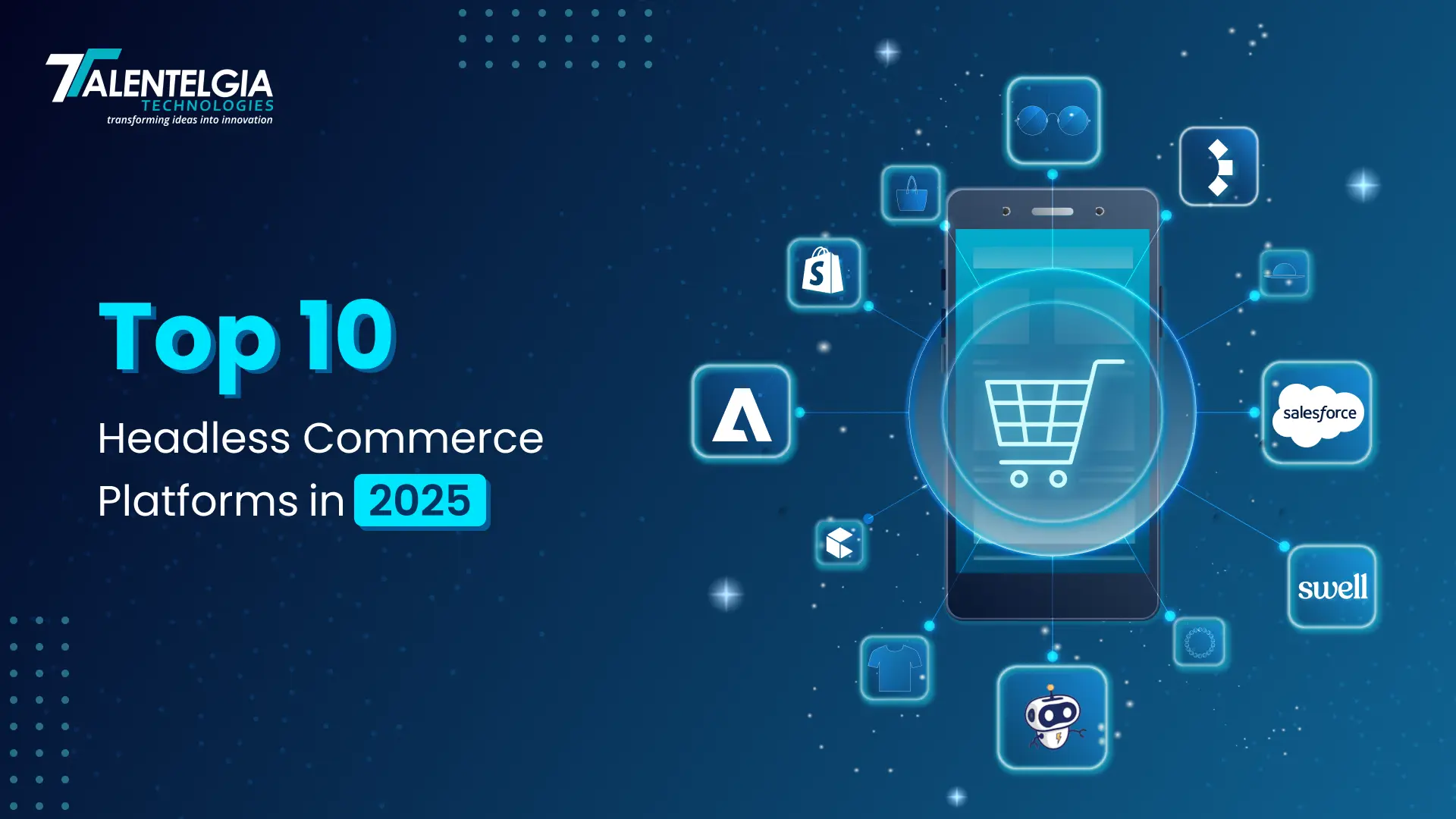

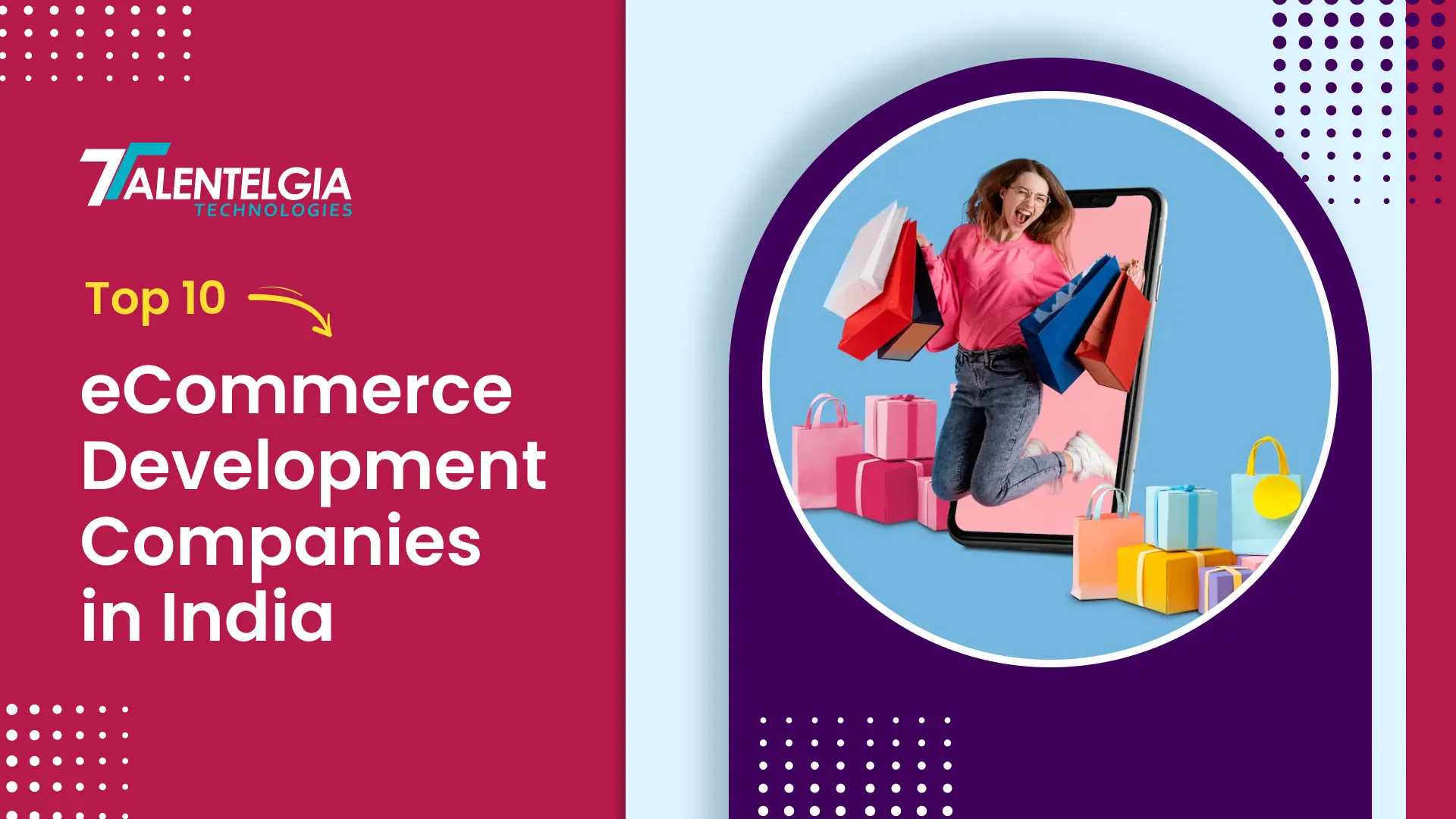

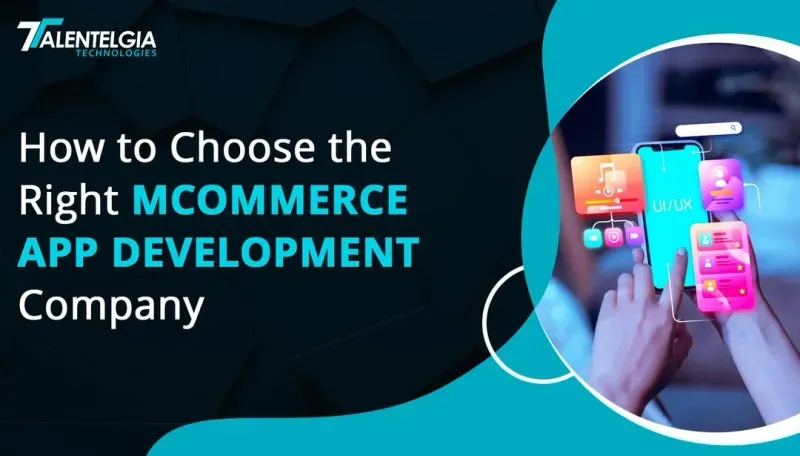
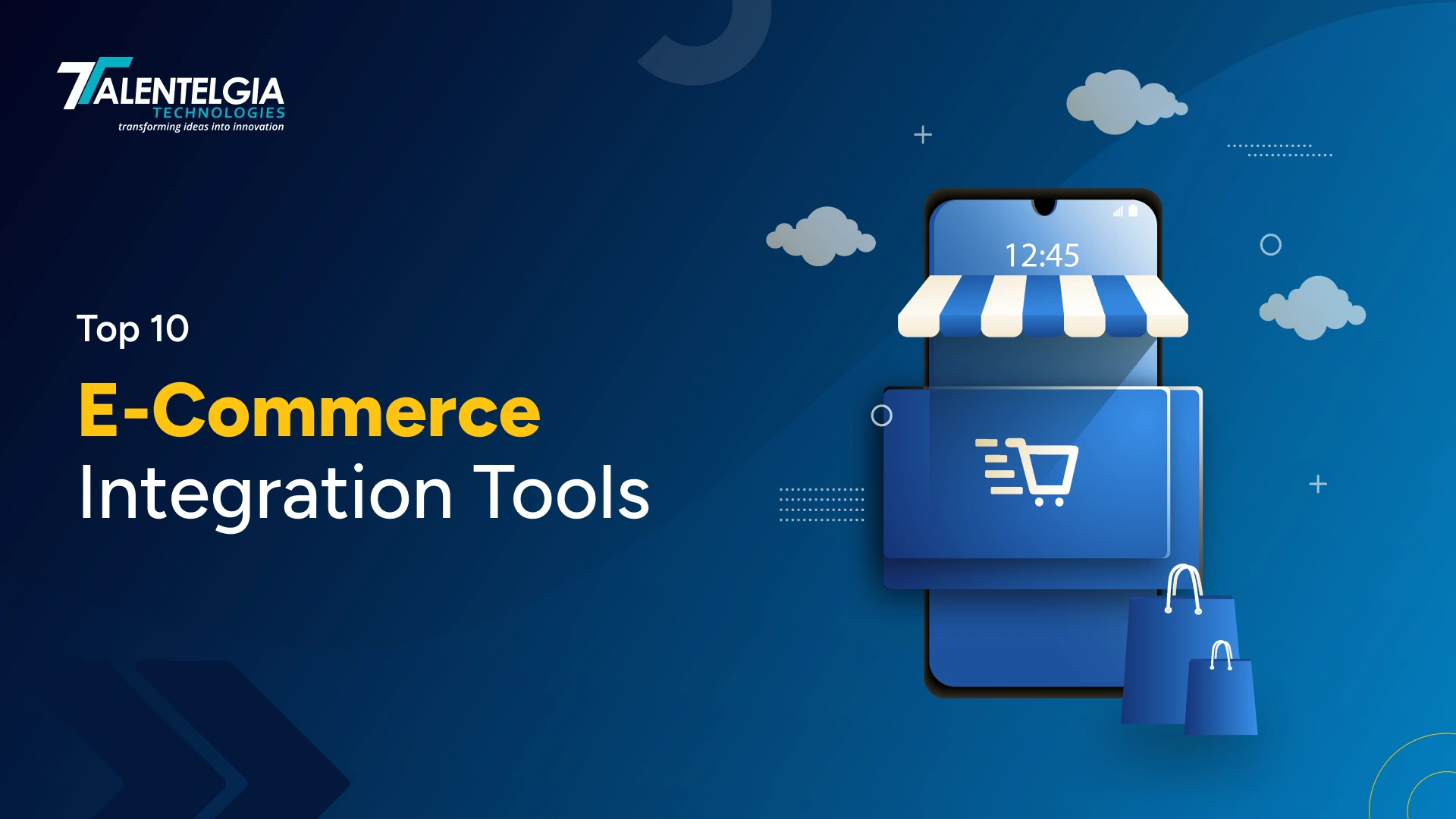











 Write us on:
Write us on:  Business queries:
Business queries:  HR:
HR: 




